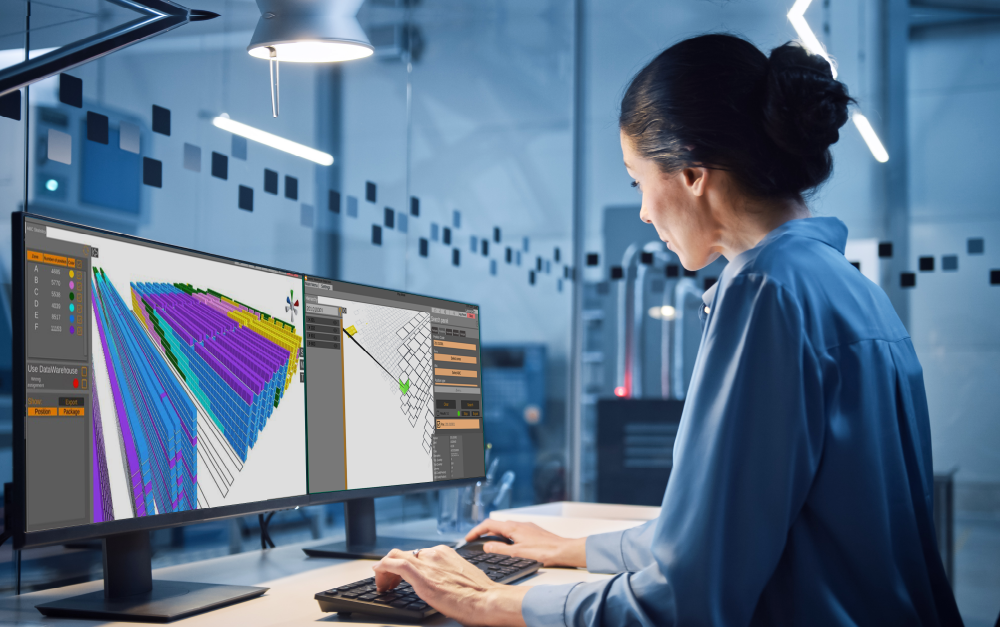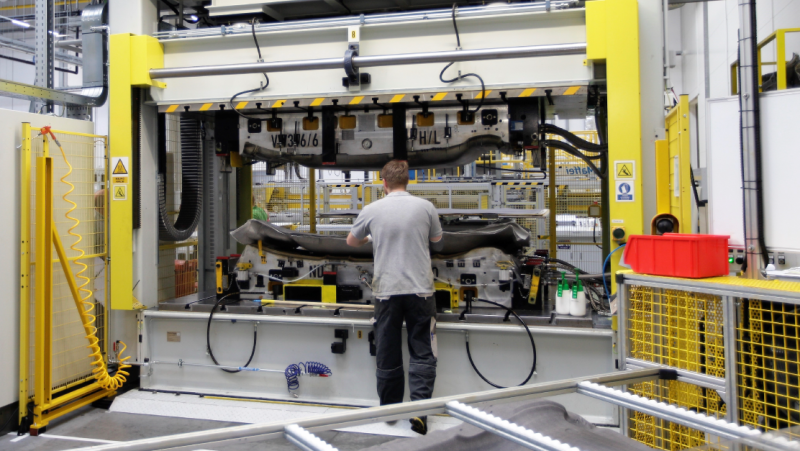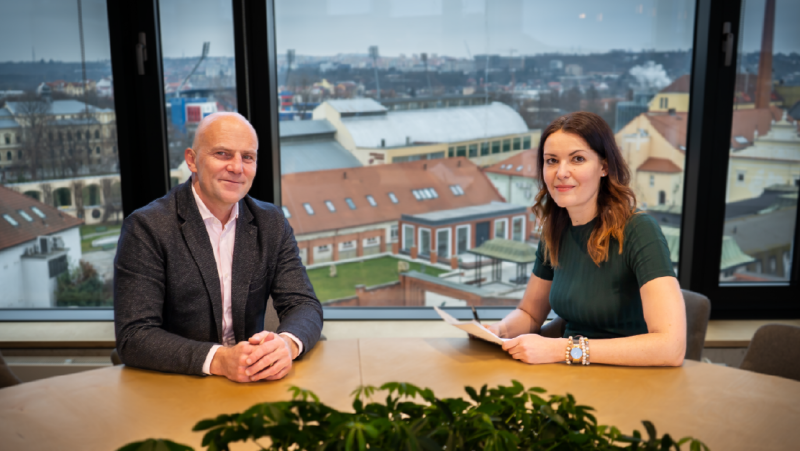Reporting, digitization and 3D visualization streamlines logistics processes by tens of percent
- Digital Factory
- Article
The complexity of today's industrial production brings manufacturing companies a huge amount of data that needs to be processed and then used efficiently. One example of such use of reporting data in manufacturing logistics is the data warehouse and the application of the digital twin of the physical warehouse, i.e. its 3D visualization. Aimtec supplied just such a solution to Continental's domestic division. Thanks to this it has reduced the work of warehouse stackers with high-volume material to a third and gained a perfect overview of in-house logistics, which will also facilitate crucial strategic decisions.
Saving whole days of work
Continental Automotive is based in Brandýs nad Labem, Czech Republic. The company has hundreds of thousands of stock units and tens of thousands of material items. By digitizing the warehouse and optimizing it, the company saved days of work for the warehouse stackers based on information obtained from reporting.
The company records 550,000 stock units and 33,000 material items in Aimtec's DCIxWMS system. The main warehouse with more than 20,000 pallet and 30,000 box positions is served by VNA stackers with integrated navigation. The company's goal was to reorganize the warehouse to maximize access to the most turn-over material, optimize warehouse stacking, and lead to better warehouse utilization (i.e. minimize air storage). As part of the reorganisation, the traditional division of processes according to receiving-production-expediting sections was abandoned and the queues were merged.
The data warehouse analysis helped to create a flexible tool that allows automatic generation of "TOs" - warehouse orders - for the utilisation of units (no need for a pallet with one crate to occupy a pallet position).
"As we are a manufacturing company, we need to minimise the time it takes to get stock items into production," says Josef Murgaš, project manager for internal warehousing and supply at Continental. The company warehouse works by loading from one side and issuing from the other. The aim was to organise it and achieve maximum efficiency of issue. "Thanks to the analysis, we have saved a lot of time for the most turnaround material which the stackers spend travelling around the warehouse. The stackers for one such stock item run for example 1200 times per month, which means 24 hours of net stacker work per month. By optimizing the warehouse based on the analysis, we reduced this time to 7.5 hours," explains Murgaš.
The digital twin also suits management
Continental used the data warehouse as a source of information for the warehouse reorganization and above it the outputs for users in the form of reporting, graphs and tables in Power BI. "A data warehouse is a database to which data is incrementally copied in minutes. They are then converted into a suitable form for reporting. Everything is programmed in such a way that reports processing huge amounts of data are available promptly," says Jiří Tuma, Development Manager at Aimtec. The goal is to work easily and quickly with the data, which works best when it is displayed in 3D. This step was made possible by a digital twin - a simple and comprehensive bird's eye or drone view of a complex reality.
The visualised warehouse was divided into parts A, B, C, D, E and F according to the time required to reach the stock positions.
“We need to hold the highest turnover goods in the most accessible positions from the aspect of production supply. As the turnover rate decreases, the 'lucrativeness' of the stock position also decreases," Murgaš explains.
Turnover was not the only criterion that Murgaš and his team had to take into account when optimizing the warehouse. Others were the type of material and packaging, the size and weight of the items or the load of the location. One specific criterion was the security of storage of some items. "We also use materials that must be stored in such a way that they cannot be reached from the ground, that is, on the third floor and above," Murgaš says.
„Without the digital twin, we wouldn't have x views of the warehouse and we wouldn't have combined the almost ten criteria we need to combine with each other. In the digital twin, we click and we know it's right or wrong.“
Miloš Havlíček, Process and Tools Manager, Continental
The digital 3D visualization of the warehouse quickly revealed all the shortcomings of the existing physical warehouse layout. It also enables continuous inventory counting on the shelves. Thanks to its visual appeal, the digital twin of the warehouse is also a good tool for the management of the Brandýs nad Labem company. The work in the real environment then goes faster and smoother.
Analysis helped to optimise warehouse work
The optimization process itself was not painless. A number of factors had to be taken into account. For example, from a safety point of view, it is not possible for two stackers to enter one aisle, which in the past often meant that one queue was standing still. "We solved it by taking all the stock orders we had in the shelf system and putting them into one unified work queue. So the stacker now takes a pallet from goods in, stacks it, takes another, picks it for production, then goes back and does inventory counting or pre-stocking or whatever the system tells him," Murgaš says.
Each work queue has its own prioritization, with the highest priority at Continental being production pick-up. But the new system has also sped up other activities. "It used to happen to us that the loading of the received material, which should have taken a maximum of four hours, took twice as long because the trolley was standing and waiting. That doesn't happen to us anymore. Realistically, we can do it in 90 minutes," says Murgaš.
Reports, analyses and display of information in 3D are not the only things that can be extracted from the data. The use of real-time information at the workplace or on a TV screen on the shop floor increases the efficiency of production and logistics processes by up to several tens of percent.
Watch the recording of Miloš Havlíček's presentation with Josef Murgaš from the 2022 DCIx user meeting.
Share article
Top stories from logistics, production and IT.
Subscribe to Aimtec Insights
By registering, you agree to the processing of your personal data by Aimtec as described in the Privacy policy.
Get top stories and articles
from Logistics, Production and IT.
Subscribe to Aimtec Insights
By registering, you agree to the processing of your personal data by Aimtec as described in the Privacy policy.







